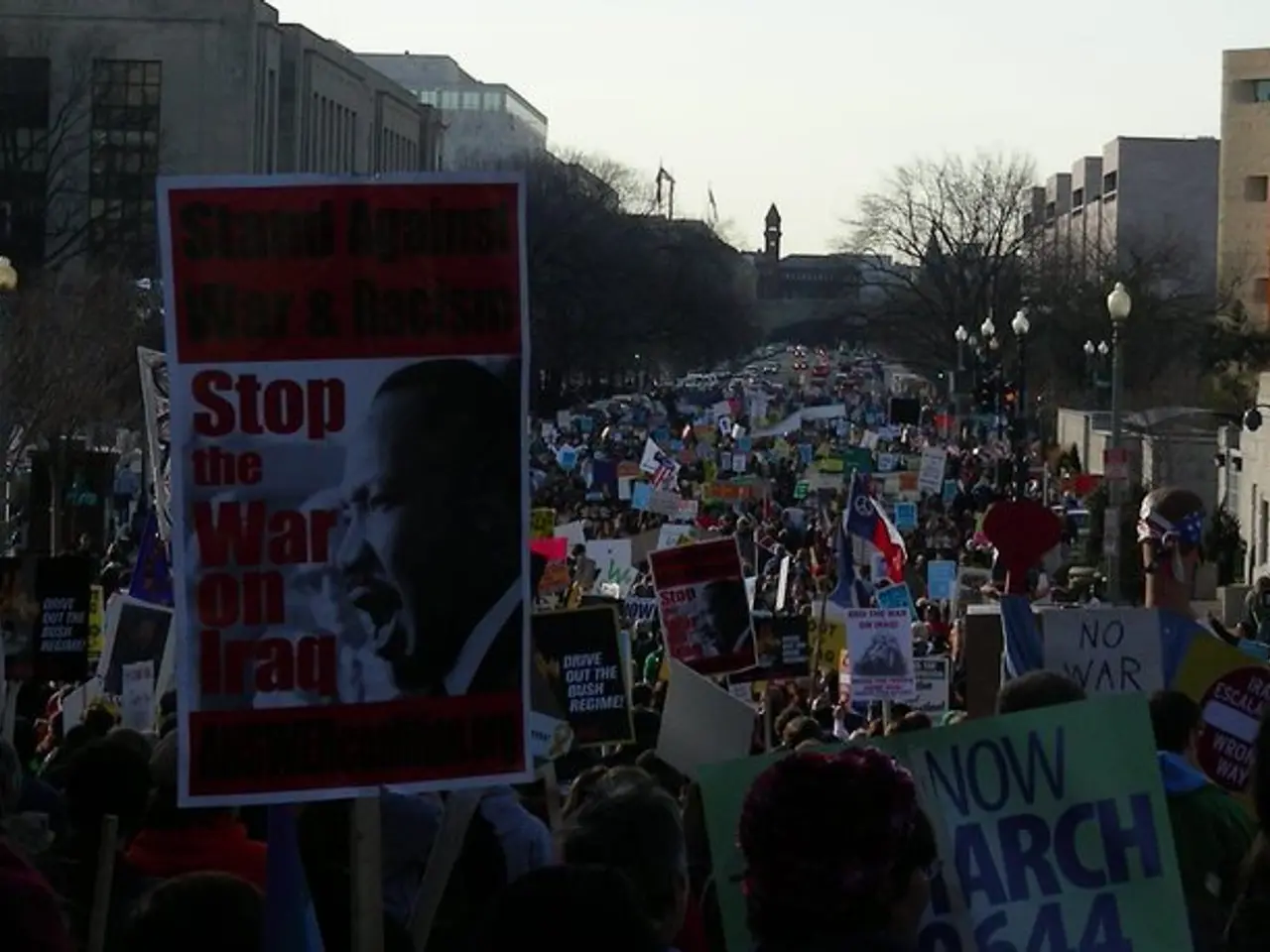U.S. tariff deadline extension causes tension and anticipation in Africa
The United States has implemented a new trade policy that ends preferential duty-free access under the African Growth and Opportunity Act (AGOA), imposing a flat 15% tariff on most African exports from August 7, 2025. Some African countries, like South Africa, are facing even higher rates of 30%, while Algeria and Libya are also subject to the same tariff[1][2].
This change significantly impacts economies that relied on AGOA for competitive access to the U.S. market, disrupting trade planning and threatening export-driven sectors. Lesotho, highly dependent on AGOA-exported textiles valued at nearly $240 million in 2024, faced an initially proposed 50% tariff, later reduced to 15%. The tariff increase caused such alarm in Lesotho’s garment sector that the government declared a national state of disaster due to risks of production closures and rising unemployment, especially among youth[1][2][4].
South Africa, subject to a 30% tariff—the highest among affected African countries—warns of potential job losses up to 30,000, particularly in automotive, agriculture, and textile sectors. The tariff sharpens concerns about trade dependency on the U.S., with South African officials emphasizing the need to adapt rapidly to the new protectionist environment and diversify trade partners[1][3][5].
Tunisia, while not specifically mentioned in these sources as heavily affected by the new tariffs, is generally recognised as part of the African export economies impacted by the shift away from AGOA preferential treatment, which could affect its competitiveness in U.S. markets if tariffs apply similarly.
Meanwhile, Algeria and Libya, both oil-rich nations, are also facing a 30% tariff under the new US trade policy. In 2023, nearly all of Libya's exports to the United States consisted of crude petroleum, while Algeria's exports to the United States are mostly oil[1]. This tariff increase could have significant implications for these countries' oil exports to the United States.
The move marks a decisive break from two decades of AGOA-facilitated trade benefits, imposing uniform tariffs that increase costs for African exporters and threaten manufacturing, agriculture, and employment across the continent. The affected countries are now compelled to reconsider their export strategies and seek new trade partnerships beyond the U.S.[1][2][3].
References: [1] Bloomberg. (2025). U.S. Imposes Tariffs on African Countries, Algeria, and Libya. [online] Available at: https://www.bloomberg.com/news/articles/2025-07-01/u-s-imposes-tariffs-on-african-countries-algeria-and-libya [2] Reuters. (2025). U.S. Tariffs on African Countries, Algeria, and Libya Spark Concern. [online] Available at: https://www.reuters.com/article/us-usa-trade-africa/u-s-tariffs-on-african-countries-algeria-and-libya-spark-concern-idUSKBN25125A [3] Financial Times. (2025). African Countries Reconsider Export Strategies Post U.S. Tariff Policy. [online] Available at: https://www.ft.com/content/241254a2-4462-45b2-b71a-c7f798c62678 [4] Lesotho Times. (2025). Lesotho Declares State of Emergency Over U.S. Tariffs. [online] Available at: https://www.lesothotimes.co.ls/2025/07/01/lesotho-declares-state-of-emergency-over-u-s-tariffs/ [5] Business Day. (2025). South Africa Faces Potential Job Losses of up to 30,000 due to U.S. Tariffs. [online] Available at: https://www.businessday.co.za/companies/mining/article20250701083308/south-africa-faces-potential-job-losses-of-up-to-30-000-due-to-u-s-tariffs.html
- The United States' new international trade policy, imposing a 15% tariff on most African exports from August 2025, has caused concerns across Africa, including in oil-rich Algeria and Libya.
- South Africa, facing a higher 30% tariff under the new policy, warns of potential job losses of up to 30,000, particularly in sectors like automotive, agriculture, and textiles, highlighting the need for rapid adaptation and trade diversification.
- Lesotho, heavily dependent on AGOA-exported textiles, initially faced a proposed 50% tariff, later reduced to 15%, leading the government to declare a national state of disaster due to risks of production closures and rising unemployment, especially among youth.







